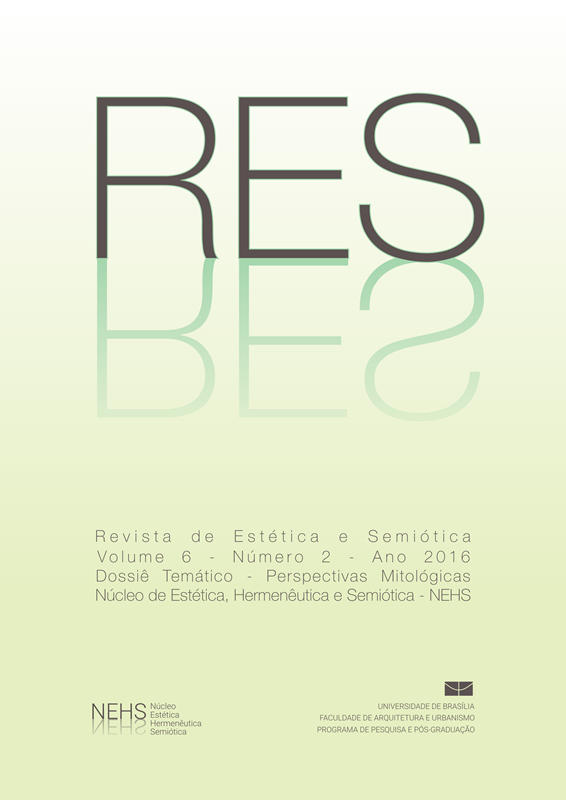THE HYGIEIA MYTH AND DIETARY MEDICINE: worship of health and hygienic rites
DOI:
https://doi.org/10.18830/issn2238-362X.v6.n2.2016.06Keywords:
Hygieia, Asclepius, Dietetics, Plague, FoodAbstract
This article examines the relationship between the incorporation of Hygieia to the family of Asclepius and the emergence of dietary medicine. Hygieia does not have its own myth, we know little about it, and almost nothing has been written on her. However, the late antiquity has left the reputation of one of the most powerful deities. It was she who mysteriously suggested the choice of foods and the appropriate remedies for the ills. Her deification and that of her father Asclepius are related to the plague of Athens that took place during the Peloponnesian War. But the success of this goddess reached more than classical Greece, becoming revered by the Romans. This shows that there was more than a concern with the return of the plague: it was the emergence of a society that cared about, health is the greater good.
Downloads
References
ARISTÓTELES. Retórica. Tradução de Quintin Racionero. Madrid, Editorial Gredos, 1994.
ATENEO. Banquete de los eruditos. Tradução e notas de Lucia Rodrigues-Noriega Guillén. Madri, Editorial Gredos, 1998.
HERO(N)DAS. Mimiambes e fragmentos mímicos. Tradução, introdução e notas de José Luiz Navarro Gonzáles e Antonio Melero. Madri, Editorial Gredos, 1981.
HIPOCRATES. Tratados Hipocráticos. Edição de Garcia Gual. Madri, Editorial Gredos, 1993-2008. 8 v.
PAUSANIAS. Descripción de Grecia. Introdução, tradução e notas de Maria Cruz Herrero Ingelmo. Madri, Editorial Gredos, 1994.
PLATÃO. La Repubblica. Tradução e notas de Mario Vegetti. Milão, BUR, 2006.
_______. Gorgias. Tradução, introdução e comentário de E. R. Dodds. Oxford, Claredon Press, 1959.
PLUTARCO. Vidas Paralelas: Péricles e Fábio Máximo. Tradução, introdução e notas de Ana Maria Guedes Ferreira e Ália Rosa Conceição Rodrigues. Coimbra, Clássica Digitália, 2010.
Fontes Secundárias
BRANDÃO, J. S. (1987). Mitologia Grega. v. II. Petrópolis: Editora Vozes.
BOYASK, R. M. (2007). Plague and the athenian imagination: drama, history and the Cult of Asclepius. Cambridge, Cambridge University Press.
BURKERT, W. (1993). Religião grega na época clássica e arcaica. Lisboa, Fundação Calouste Gulbenkian.
BURKERT, W. (1991). Antigos cultos de mistério. São Paulo, Edusp.
COMMELIN, P. (2011). Mitologia grega e Romana. São Paulo, Martins Fontes.
CRAIK, E. (1995). Diet, diaita and dietetics. In: POWELL, A. The Greek World. Londres, Routledge, p. 307-402.
DIGNAS, B. (2007). A Day in the Life of a GreekSanctuary. In: OGDEN, D. A companion to Greek Religion. Malden, Blackweel Publishing.
EDELSTEIN, L.; EDELSTEIN, E. J. (1998). Asclepius: collection and interpretation of the testemonies. Baltimore, The John Hopkins University Press.
______ (1960). The dietetics of Antiquity. In: TEMKIN, O.; TEMKIN, C.L. Ancient Medicine. Baltimore, John Hopkins Press, p. 303-318.
van der EIJK, P. (2005). Medicine and Philosophy in Classical Antiquity. New York, Cambridge Universiy Press.
GRMEK, M. (1983). Les maladie à l’aube de la civilizacion occidentale. Paris, Payot.
JOLY, R. (1966). Le Niveau de la Science Hipoccratique. Paris, Belles Lettres.
JOUANNA, J. (1992). Hippocrate. Paris, Fayard.
KLAUCK, H-J. (2011). O entorno religioso do cristianismo primitivo: Religião civil e religião doméstica, cultos de mistérios, crença popular. São Paulo, Edições Loyola.
MOYNIHAN, R.; WASMES, A. (2007). Vendedores de doença: estratégias da indústria farmacêutica para multiplicar lucros. In: PELIZZOLI, M. Bioética como novo paradigma: por um novo modelo biomédico e
biotecnológico. Petrópolis: Editora Vozes, p. 151-156.
SHAMPO, M. A.; KYLE, R. A. (1993). “Medical mythology: Hygieia”. In: Mayo Clinic Proceedings, Rochester, v. 68, issue 5, p. 441.
STAFFORD, E. (2007). Personification in Greek religious thought and practice. In: In: OGDEN, D. A companion to Greek Religion. Malden: Blackweel Publishing.
WALTERS, H. B. (1899). “Athena Hygieia”. In: The journal of Hellenic Studies, Cambridge, v. 19, p. 165-8.




